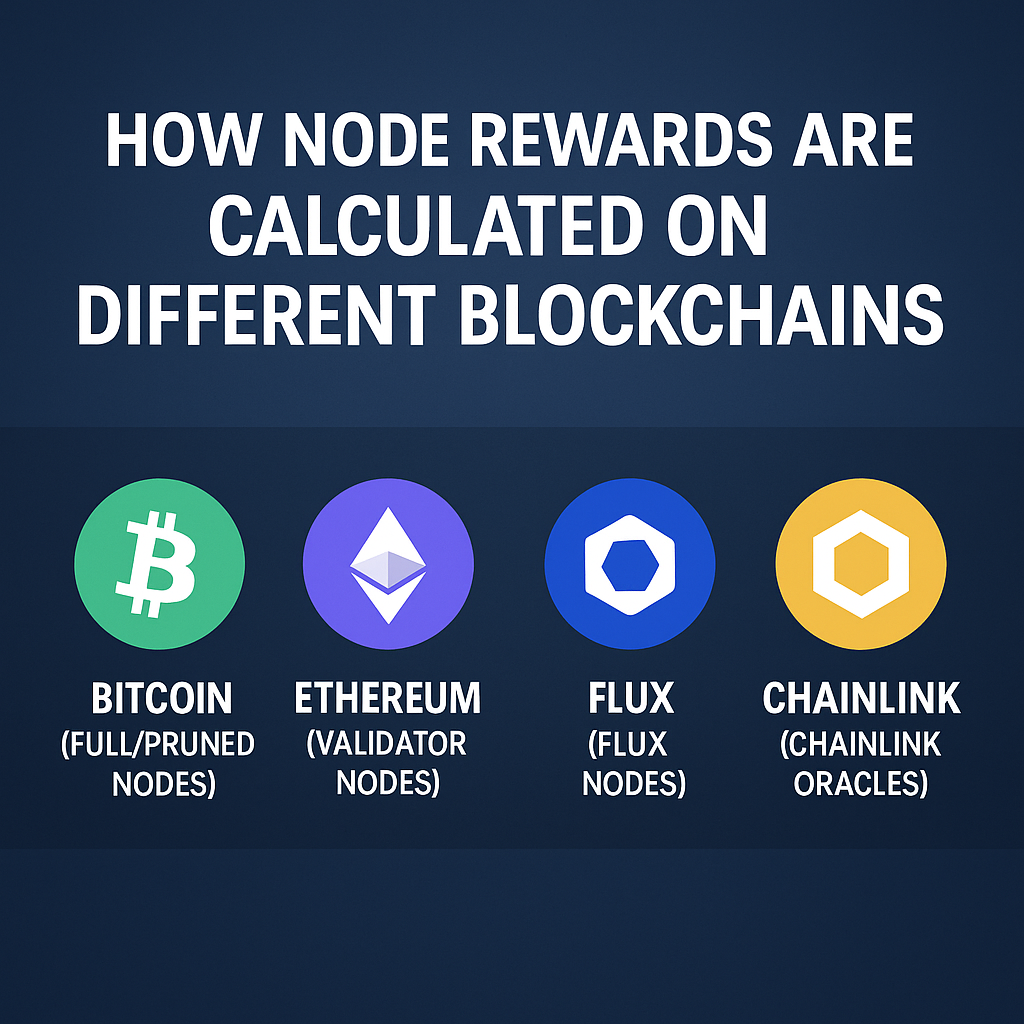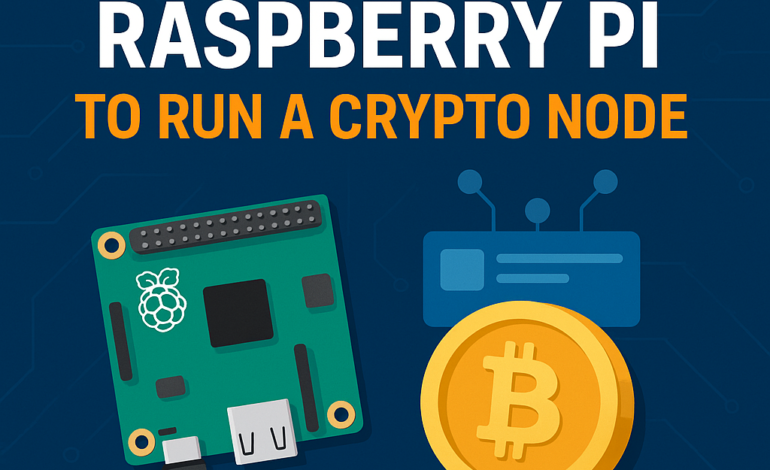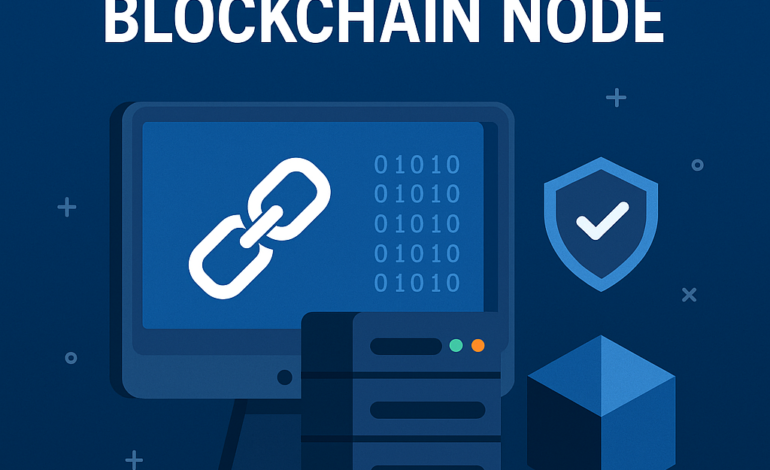As blockchain networks evolve, more crypto investors and institutions are turning to node-based rewards as a steady source of passive income. However, it’s important to understand that node reward mechanisms differ from one blockchain to another. Each network has its own system for calculating how much node operators earn — based on factors like uptime, staking amounts, transaction volume, and protocol-specific incentives.

What Are Node Rewards?
Node rewards are incentives given to network participants who run nodes — computers that validate transactions, store blockchain data, and help maintain decentralized network operations. Depending on the network type and node function, these rewards can come in the form of native tokens, transaction fees, or governance incentives.
Factors That Influence Node Rewards
Before diving into specific blockchain examples, here are some core factors that typically affect how node rewards are calculated:
- Node Type (Full, Light, Master, or Validator)
- Staking Amount or Collateral
- Uptime and Availability
- Transaction Volume Processed
- Network Reward Pool or Emission Rate
- Bonus Incentives (early participation or governance perks)
- Penalty Mechanisms (for downtime or malicious behavior)
How Rewards Are Calculated on Popular Blockchains
Bitcoin (Full/Pruned Nodes)
Bitcoin full nodes don’t receive direct monetary rewards for operating, as mining handles block creation incentives. Running a full node supports network decentralization and security, but there’s no built-in reward mechanism for node operators.
Ethereum (Validator Nodes)
On Ethereum’s Proof-of-Stake network, node operators (validators) earn rewards by proposing and attesting to new blocks.
Reward calculation depends on:
- The total amount of ETH staked across the network
- The individual validator’s stake (minimum 32 ETH)
- Uptime and performance (validators are rewarded for being online and penalized for downtime or dishonest activity)
- A dynamic reward curve, where rewards decrease as total staked ETH increases
Flux Nodes
Flux uses a tiered node system (Cumulus, Nimbus, Stratus) with different collateral requirements and reward rates.
Flux node rewards depend on:
- Node tier (higher tiers receive higher rewards)
- Daily network reward pool, divided among active nodes
- Node uptime, performance, and ability to pass verification checks
Rewards are split evenly within each tier, so the more active nodes in a tier, the lower the individual payout.
Chainlink Oracles
Chainlink node operators provide decentralized data feeds and are compensated in LINK tokens.
Rewards depend on:
- Number of data requests fulfilled
- Agreed-upon fee rates for each job
- Reliability, accuracy, and consistent uptime
- Demand for data services on the Chainlink network
Some Chainlink node operators also negotiate custom contracts with DeFi projects for higher fees.
Aleph Zero & Emerging Projects
In newer blockchain networks like Aleph Zero or other layer-1 projects, node rewards often rely on a combination of:
- Fixed or dynamic emission schedules
- Staking requirements
- Number of transactions processed
- Special bonus periods for early adopters
Some emerging chains even offer token bonuses, NFT incentives, or governance rights as part of node reward packages.
Common Reward Calculation Models
- Fixed Daily/Monthly Payouts: Example — Flux divides its reward pool daily among active nodes by tier.
- Dynamic Staking Yields: Example — Ethereum rewards vary based on network staking participation.
- Transaction-Based Earnings: Example — Chainlink pays per API call or data request.
- Governance/Bonus Incentives: Some blockchains reward extra for governance votes or protocol participation.
Final Thoughts
Understanding how node rewards are calculated is essential for anyone looking to invest in node operations as a passive income stream. Each blockchain uses unique mechanisms to incentivize node operators based on their value to the network. By carefully choosing the right projects and maintaining strong node performance, operators can maximize their earnings while contributing to the health and security of decentralized systems.




